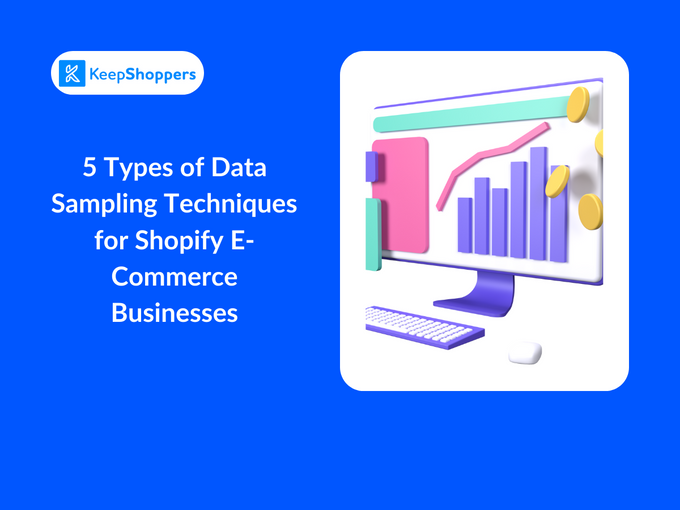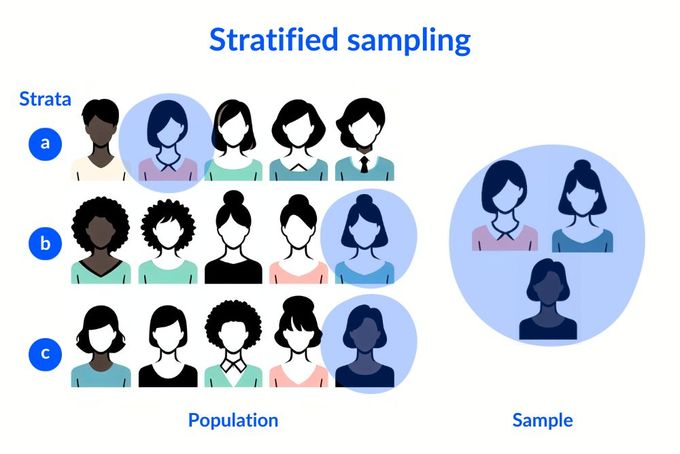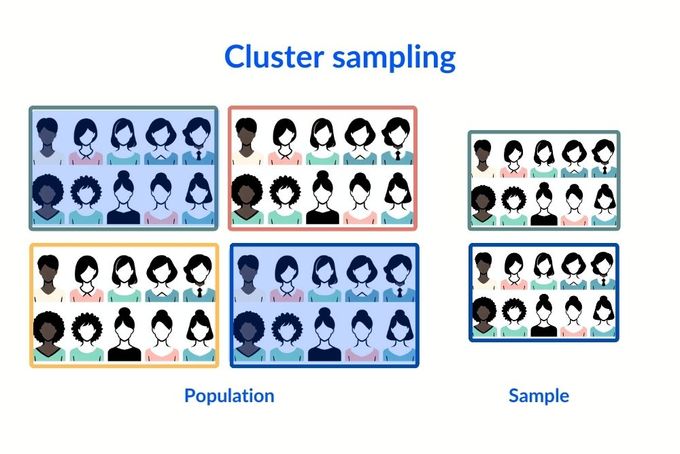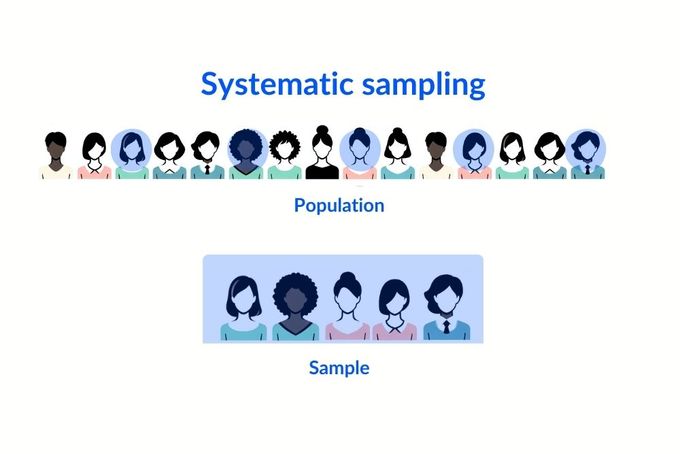5 Different Types of Data Sampling Techniques for Shopify
Discover varied types of data sampling strategies to elevate your Shopify store's data analysis
Published November 7, 2023

AI Summary
With a 70% cart abandonment rate in e-commerce, understanding customer behavior is essential for retention. Shopify packs plenty of data to help you make decisions, but for custom insights or specific queries, you often need to handle your own. Analyzing every single data point may not always be necessary or practical. This is where data sampling comes in.
There are various data sampling techniques that Shopify store owners can use, each with its own pros and cons. I'll look at some of the most frequently used data sampling techniques for Shopify and discuss how and when to use them effectively.
Meet the Expert
Jameela Ghann is a seasoned online store owner with over a decade of eCommerce experience. Apart from running Alora Boutique, she's also the marketing manager for Fera Product Reviews.
A Quick Look at 5 Data Sampling Techniques for Shopify
1. Simple random sampling
2. Stratified sampling
3. Cluster sampling
4. Systematic sampling
5. Convenience sampling
What Is Data Sampling?
Data sampling is a technique used to select a smaller, representative group of data from a larger dataset. This allows businesses to analyze data more efficiently and gain valuable insights without having to process every single data point. It's like taking a sample of a population to understand the characteristics of the entire group.
The population is the entire set of data that you are interested in studying. For example, the population of a Shopify store could be all of its customers or all of its products. The sample is the subset of the population that you select to study. So a Shopify business might select a random sample of 100 customers or 100 products to study.
A Shopify store with thousands of products and customers could generate millions of data points. Analyzing every single data point would be time-consuming and impractical. By selecting a smaller, representative sample, Shopify businesses can gain valuable insights from their data without the burden of analyzing every single data point.
How to Determine the Appropriate Sample Size?
The appropriate sample size depends on a number of factors, including
- Population size
- Desired level of accuracy
- Desired level of confidence
There are a number of online calculators that can be used to determine the appropriate sample size. When using a sample size calculator, it is important to input accurate information about these factors.
» Discover expert tips to create better store demos using sample data
5 Types of Data Sampling Techniques for Shopify E-Commerce Businesses
1. Simple Random Sampling
This technique involves selecting individuals from a population randomly. A random number generator can be used to select members of the population.
Example: A Shopify store owner wants to analyze their sales data for the past month. They have 10,000 sales orders and decide to use simple random sampling to select a sample of 1,000 orders. Using a random number generator to select the 1,000 orders, they can analyze that sample to get insights into sales performance.
2. Stratified Sampling
This technique involves dividing a population into subgroups (strata) based on a shared attribute, such as age, gender, or location. A sample is then selected from each stratum, ensuring that the sample is representative of the entire population.
Example: A Shopify store owner wants to analyze their customer base to learn more about their demographics and purchase behavior. They use stratified sampling to select a sample of customers and divide the customer base into different strata based on a shared attribute, then randomly select a sample of customers from each stratum.
3. Cluster Sampling
This technique involves dividing a population into groups (clusters). A sample of clusters is then selected, and all members of the selected clusters are included in the sample. This technique is useful when the population is geographically dispersed. For instance, a Shopify business with 1,000 customers can use cluster sampling to select a sample of 100 customers by dividing its customers into 10 clusters based on their location.
Example: A Shopify store owner wants to analyze the sales performance of different product categories. Using cluster sampling to select a sample of product categories, the owner divides the product categories into different clusters by type, price, and popularity, and then randomly selects a sample of clusters.
4. Systematic Sampling
This technique involves selecting every kth member of the population for the sample, starting at a random point.
It is an easy and efficient way to select a sample, but it is important to ensure that the starting point is truly random and that the population is ordered in a way that does not bias the sample.
5. Convenience Sampling
This technique involves selecting a sample from the population that is most easily accessible to the researcher. It is a quick and simple way to collect data, but it is important to note that convenience samples are often not representative of the entire population.
Example: A Shopify business with 1,000 customers can use convenience sampling to select a sample of 100 customers by surveying the first 100 customers who visit its website on a particular day.
Simple random sampling and stratified sampling are two commonly used techniques in Shopify analytics because they are easy to understand and apply. However, it's important to remember that simple random sampling may not always provide a truly representative sample, especially if the data is heavily skewed or unevenly distributed.
» Learn how to export sample data from Shopify
Challenges of Implementing Data Sampling in Shopify
When it comes to implementing data sampling, e-commerce businesses often face two main challenges.
- Selecting a representative enough sample to ensure that the results of the analysis are not biased.
- Determining the appropriate sample size. A sample that is too small may not be accurate, while a sample that is too large may be expensive and time-consuming to analyze.
To address these challenges, e-commerce businesses should consider using stratified sampling whenever possible. This method ensures that all the different groups in the population are represented in the sample.
Future Trends in Data Sampling for Shopify E-commerce
There are several important trends that e-commerce businesses using Shopify should consider when it comes to data sampling.
- One of these trends is the increased use of artificial intelligence (AI) and machine learning (ML), which can automate the data sampling process and uncover patterns and trends that may be difficult to identify manually.
- Another trend is real-time data sampling, which allows businesses to analyze data as it is collected, enabling them to make more timely decisions based on emerging trends.
- Finally, integrated data sampling is becoming more popular, as it enables businesses to sample data from multiple sources, such as their Shopify store, website, and social media accounts, providing a more comprehensive view of their customers and business operations.
Employing AI and ML can help automate the data sampling process and identify patterns and trends that may be difficult to find manually.
Unlock Efficiency and Insight with Data Sampling
Data sampling is a useful technique that can save e-commerce businesses valuable time and resources while providing deeper insights into their data. Why? Because:
- Data sampling is versatile and can be used with various data sources
- Data sampling can reveal more insights into your data
- There are numerous tools and resources available to help businesses conduct data sampling in Shopify, so data sampling is available to many stores.
» Find out how to use sample data for website testing









